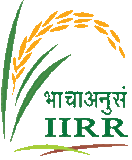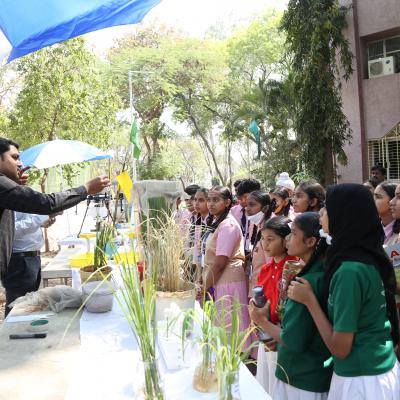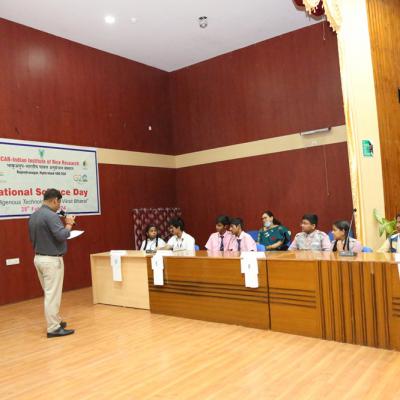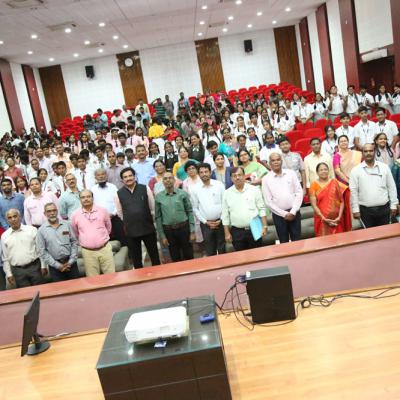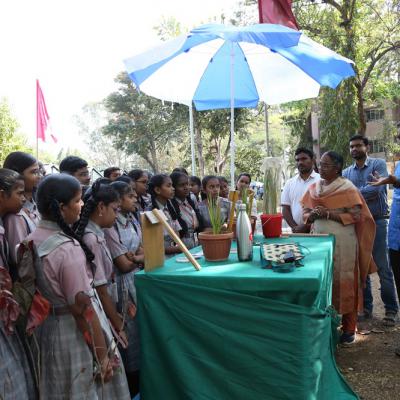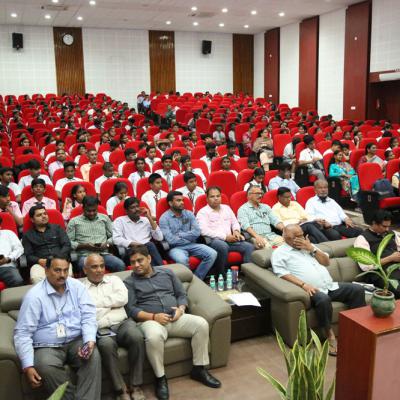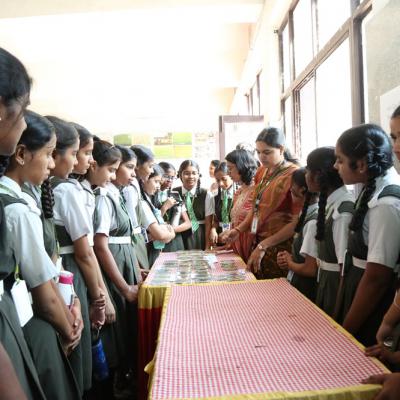Aromatic rice as a trap crop for stem borer management in rice
Technology Profile
The use of aromatic rice variety (Pusa Basmati1) variety as ‘Trap crop’ for the management of yellow stem borer has been successful. Studies were carried out to explore the possibility of using a susceptible variety as a trap crop to wean way the pest from damaging the main crop. Initial efforts made at ICAR- IIRR revealed the utility of aromatic varieties of rice in trapping the larvae of yellow stem borer which were attracted to these varieties more than the non aromatic lines. Of the many varieties tested, Pusa Basmati-1 was found to be the most susceptible aromatic variety which when planted in the main field can help in minimizing the damage to the main crop. The duration of the main crop and the trap crop were considered based on which the date of sowing was adjusted so that the trap crop would come to booting a week earlier than the main crop. However, planting of main crop and trap crop was done at the same time. Planting of one row of Pusa Basmati-1 as trap crop, preferably in east– west direction, for every 2.5-3m of main crop, resulted in effectively managing the pest in the main field planted with popular variety. The stem borer damage observed in the main crop was half of the damage that was recorded in the trap crop. By adopting this practice in a stem borer endemic area, impulsive spraying of chemical pesticides against yellow stem borer could be avoided at the vegetative stage. The yield was higher in the main crop where trap crop was grown compared to the fields without the trap crop. Also, though the yield in trap crop was affected due to higher pest damage the resulting yield from the trap crop would still be of added advantage as aromatic rice fetches premium price.
Context
- Yellow stem borer a major pest of rice causes damage from seedling to grain filling stage resulting in significant yield losses which may range from 10-90%.
- Timing of application of any control is crucial for achieving its efficacy in reduction in pest damage.
- Potential losses incurred by farmers by continuing with the status quo
- This gap exists in areas/ districts in Telangana and Andhra Pradesh.
- All the rice growing districts of Telangana and Andhra Pradesh.
Empirical Evidences
- Field testing The practice has been successfully tested with varieties as main crop like Swarna, BPT5204, Prakash, PA6444, MTU1010, Krishnahamsa, private hybrids in erstwhile districts of Medak, RangaReddy, Mahaboobnagar and Nalgonda through on-farm trials and FLDs.
- The dead heart damage did not cross 10%.
- Irrespective of the variety, damage in the main crop is reduced to half of that in the trap crop.
- In a stem borer endemic area, one impulsive spraying of chemical pesticides can be avoided at the vegetative stage. This would help in conserving the natural enemies. This a form of Habitat management.
- Pusa Basmati 1 being a premier scented variety, fetches more price in the market. Hence the cost benefit ratio is always favourable and is ≥ 1.5 :1.
- It is an eco- friendly pest management strategy to control YSB by manipulating the pest habitat.
Demonstration yields and incomes
- Increases income by improving productivity
- Reduced cost of cultivation with Resource Use Efficiency / Opportunity costs with better pest/disease management
- Increased cropping Intensity – Farming system approach
- Digital strategies to drive science led rice farming
- Supply & value chain management – Better Markets
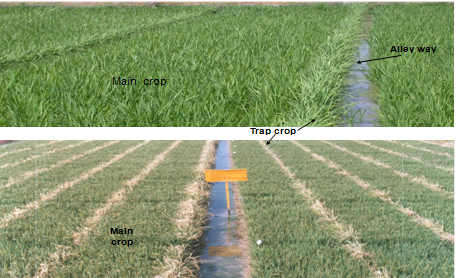
Practical Utility/ Scalability
- This would assure season long control irrespective of the timing of moth emergence or pest incidence in the field.
- Cost of one insecticidal application is reduced as the damage in the main crop will be maintained below ETL in most of the situations.
- Hence there’s positive effect on the ecosystem services which is beyond quantification.
- The technology was tested across ecosystems with varieties like Karjat 3, Rajendra Kasturi, Jyoti, Swarna, TPS 3, ADT 36, BPT5204, in multilocation evaluation under All India coordinated trials for 3 years and found effective in reducing stem borer damage with favourable benefit cost ratio.
- The B: C ratio though favourable would vary with the value of the main crop variety, level of infestation or pest incidence. Precautions
- This is for only stem borer management hence suggested for stem borer endemic areas. So other biotic stresses may be tackled as per the need.
- Availability of seed at the right time.
- Convincing the labourers to plant one row in between the main crop ie. after 3m.
- Harvesting the trap crop before harvesting the main crop when mechanical harvesters are in vogue.
- This practice cannot be used in seed production plots.
- To tackle the pest complex in times of severity.
- Care must be excercised when recommending in blast endemic areas as the aromatic variety is susceptible to blast.
